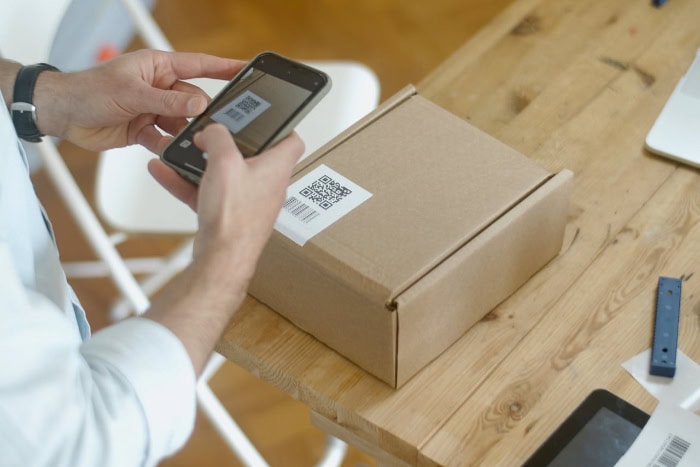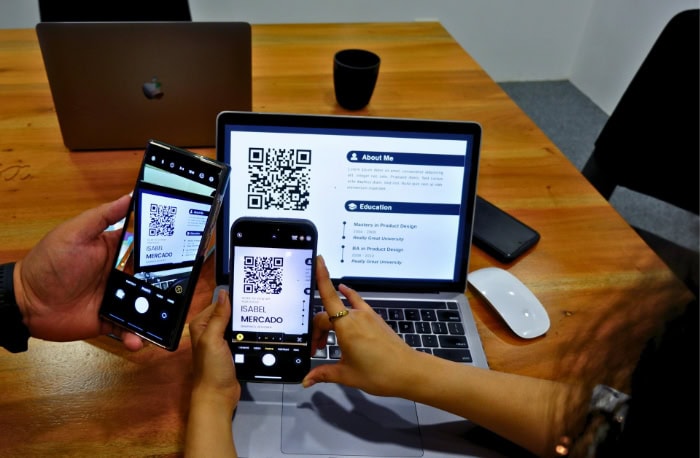QR Codes vs. Barcodes: How They Fit Different Needs

Every time you scan a product at a store or use your smartphone to access a menu, you’re interacting with powerful data encoding technologies: barcodes and QR codes. These seemingly simple patterns hold the key to streamlining processes, connecting users to digital information, and enhancing everyday experiences.
Despite their shared purpose of storing and transmitting data, the way they operate, their capabilities, and their ideal applications set them apart.
For businesses, choosing between barcodes and QR codes can influence everything from operational efficiency to customer engagement. Meanwhile, for users, these technologies offer varying levels of convenience and versatility.
Understanding the Basics
Barcodes and QR codes are two widely used methods of encoding information, each with its own structure and functionality. Both serve as tools to simplify data storage and retrieval, but their differences in design and capacity make them suitable for distinct applications.
What Are Barcodes?
Barcodes are one-dimensional (1D) linear representations of data, consisting of a series of parallel lines and spaces of varying widths. Each line and space corresponds to specific information, which is decoded by a scanner to retrieve the encoded data.
This format has been around since the 1970s and has become a standard in retail, logistics, and inventory control.
Barcodes are commonly used to track products, manage stock levels, and speed up checkout processes in stores. When you see a product’s price or identification number scanned at the register, that data is being retrieved from the barcode.
Despite their simplicity, barcodes are limited in what they can store—they are primarily suited for numerical or alphanumeric data such as product codes or serial numbers.
What Are QR Codes?
QR codes, short for “Quick Response” codes, take data encoding to another level. Unlike barcodes, QR codes are two-dimensional (2D) matrix patterns made up of black squares arranged on a white grid.
This design allows them to store significantly more information, including multimedia files, URLs, and other complex data types.
QR codes were introduced in the 1990s and have since gained popularity due to their versatility. They can encode not just text but also images, videos, and links, making them ideal for applications that require interactive or digital engagement.
For example, scanning a QR code with a smartphone camera can redirect the user to a website, download an app, or connect to a Wi-Fi network—all within seconds.
Their ability to handle more data and work seamlessly with mobile devices has made QR codes a popular tool in areas such as marketing, ticketing, and payment systems.
Key Structural Differences
One of the most notable differences between barcodes and QR codes lies in their data storage capacity. Barcodes are restricted to encoding basic alphanumeric information, which limits their use to simple tasks like identifying products or tracking shipments.
In contrast, QR codes can store thousands of characters, including multimedia data, making them far more versatile.
The physical layout of these technologies also sets them apart. Barcodes use a linear format, where data is read horizontally from left to right.
This design is straightforward but requires a sufficient amount of horizontal space for the code to be printed and scanned effectively.
On the other hand, QR codes employ a grid-based structure that uses both horizontal and vertical dimensions, allowing them to pack more information into a smaller area.
Scanning Technology and Accessibility

The ability to scan and interpret barcodes and QR codes is what makes these technologies practical for various applications. However, the methods and tools required to scan each differ significantly, influencing their effectiveness and ease of use.
Scanning Requirements for Barcodes
Barcodes rely on specialized laser scanners to read the data encoded in their linear design. These scanners emit a beam of light that reflects off the barcode, capturing the varying widths of the lines and spaces to decode the information.
While laser scanners are highly efficient for their intended purpose, they come with certain limitations.
To function properly, the scanner needs a clear and unobstructed view of the barcode. If the code is damaged, smudged, or partially obscured, the scanner may struggle to decode it, leading to errors or delays.
Additionally, barcodes require precise alignment during scanning, as most laser scanners can only read them from specific angles. For example, tilting the scanner or positioning the barcode at an odd angle may result in a failed read.
These limitations make barcode scanning straightforward but somewhat rigid.
While perfectly suited for environments like retail checkouts or warehouse inventory systems, where proper alignment is easy to achieve, this method can fall short in more dynamic or less controlled settings.
Scanning Requirements for QR Codes
QR codes, on the other hand, offer far greater flexibility when it comes to scanning. Unlike barcodes, which depend on laser scanners, QR codes can be read by a variety of devices, including smartphones, tablets, and standard image-based scanners.
Modern smartphones are equipped with cameras and software capable of decoding QR codes instantly, eliminating the need for specialized equipment.
One of the standout features of QR codes is their built-in error correction capability. Even if a portion of the QR code is damaged, smudged, or partially obscured, it can still be decoded accurately in most cases.
This is made possible by the redundancy built into the QR code’s design, which allows critical information to remain intact even when parts of the code are compromised.
QR codes are also less sensitive to scanning angles. Whether the code is tilted, upside-down, or positioned at an unusual angle, most modern scanners or smartphone cameras can still decode the information without issue.
This flexibility makes QR codes exceptionally convenient and adaptable for a wide range of environments, from outdoor advertising to self-service kiosks.
Ease of Use Comparison
Barcodes excel in simplicity. Their straightforward design and reliance on dedicated laser scanners make them easy to use in controlled environments like retail stores or warehouses.
Employees can quickly scan items with minimal training, and the technology is highly reliable so long as the codes remain intact and properly aligned.
QR codes, however, offer unmatched versatility. The ability to scan them using everyday devices like smartphones opens up possibilities for broader engagement and convenience.
Whether it’s accessing a restaurant menu, making a payment, or retrieving event tickets, QR codes simplify interactions by allowing users to bypass specialized hardware.
The error correction and angle-independence features further enhance their practicality, making them effective in both controlled and unpredictable settings.
Use Cases and Applications

Barcodes and QR codes fulfill different roles depending on the context in which they are used.
While barcodes have long been associated with traditional industries that require straightforward data encoding, QR codes have gained prominence in more modern, interactive applications.
Barcodes in Traditional Applications
Barcodes are a cornerstone of efficiency in retail and inventory management. Their ability to store simple alphanumeric data makes them ideal for tasks like product labeling and pricing.
When you shop at a grocery store or department store, the barcode printed on an item enables quick and accurate scanning at the checkout counter. This ensures that prices are applied correctly and allows businesses to maintain consistency in their sales systems.
Beyond retail, barcodes play a crucial role in inventory tracking. Warehouses and distribution centers use them to monitor stock levels, track shipments, and streamline logistics.
By scanning barcodes on boxes or pallets, workers can instantly update databases, reducing errors and saving time.
This technology is particularly well-suited for environments where large quantities of products need to be managed efficiently, as it offers a low-cost and reliable way to handle repetitive tasks.
QR Codes in Modern Applications
QR codes have emerged as a versatile tool for more interactive and data-rich applications. Their ability to store a wide range of information makes them a favorite in marketing campaigns.
For example, businesses often use QR codes on posters, brochures, or product packaging to link consumers to websites, apps, or promotional content.
A simple scan with a smartphone can provide instant access to detailed information or exclusive offers, making them a powerful tool for engagement.
In addition to marketing, QR codes have become a standard in ticketing systems, digital payments, and even Wi-Fi sharing. They streamline the process of accessing services by eliminating the need for manual inputs.
For instance, QR codes on event tickets allow for quick validation at venues, while their use in payment systems enables seamless transactions without the need for cash or cards.
Similarly, scanning a QR code to connect to a Wi-Fi network simplifies what would otherwise be a multi-step process.
This adaptability has made QR codes a popular choice across industries that prioritize convenience and interactivity. Their ability to encode multimedia content and handle more complex data sets gives them an advantage in scenarios where traditional barcodes would fall short.
Choosing the Right Technology for Specific Needs
The decision to use barcodes or QR codes often depends on the specific requirements of the application. Barcodes are ideal for low-cost, straightforward tasks where simplicity and reliability are paramount.
Their ease of implementation and proven effectiveness in traditional settings make them the go-to option for industries like retail, logistics, and manufacturing.
Conversely, QR codes excel in situations that demand versatility and the ability to store richer data. They are particularly valuable in environments where digital integration and user interaction are priorities.
From enhancing customer experiences in marketing to simplifying complex processes in ticketing or payments, QR codes provide functionality that barcodes cannot match.
Cost Considerations

The cost of implementing barcodes and QR codes is an important factor for businesses, as it directly impacts operations and long-term savings. While both technologies are generally affordable, their associated expenses vary depending on the complexity of the system and the intended use.
Cost Efficiency of Barcodes
Barcodes are an economical choice for businesses that need a straightforward solution for tracking and labeling. Printing barcodes requires minimal resources, as they can be seamlessly integrated into product packaging, labels, or tags using standard printing methods.
This low-cost production makes barcodes particularly attractive for industries such as retail and logistics, where large volumes of items need to be labeled consistently.
The hardware required to implement barcodes is also relatively inexpensive. Laser barcode scanners, often used in retail stores or warehouses, are affordable, durable, and easy to maintain.
These devices are designed to function efficiently in environments where simplicity and speed are priorities, further minimizing operational costs. For businesses focused on basic operations, the affordability of barcodes is a strong advantage.
Additionally, the simplicity of barcode systems means that staff training is minimal, saving both time and resources. Employees can quickly learn to scan barcodes and update inventory systems, making the technology not only cost-effective but also practical for day-to-day use.
Long-Term Value of QR Codes
While QR codes may involve higher upfront costs, they offer significant advantages in terms of long-term value. The initial expenses often stem from the need to create a digital infrastructure that supports QR code functionality.
For example, businesses may need to develop custom apps, websites, or backend systems to fully leverage the technology. However, once these systems are in place, QR codes can deliver cost savings in various ways.
One major benefit of QR codes is their ability to reduce reliance on physical materials. By encoding information digitally, QR codes can replace printed brochures, menus, or other paper-based materials.
For instance, restaurants that use QR codes to display digital menus can lower printing costs while also providing an environmentally friendly alternative. Similarly, businesses that distribute digital tickets or documents through QR codes save on the costs of printing and distribution.
QR codes also offer versatility that supports modern operational needs. Their integration with smartphones and other devices eliminates the need for specialized scanners, allowing businesses to adapt to changing consumer habits.
Over time, this flexibility can reduce the cost of upgrading or replacing hardware, as QR codes are compatible with widely available devices.
Despite their higher setup costs, QR codes provide a return on investment by enabling businesses to streamline processes, enhance customer engagement, and embrace digital solutions. This makes them a valuable choice for organizations aiming to modernize their operations and reduce long-term expenses.
Conclusion
Barcodes and QR codes have proven to be indispensable tools in managing and sharing information across industries. While barcodes shine in simplicity and cost-effectiveness for tasks like product labeling and inventory management, QR codes bring versatility and adaptability to applications requiring richer data and user interaction.
Each technology offers unique benefits and fits specific operational needs, from retail to marketing and beyond.
The choice between these two solutions often depends on factors such as budget, complexity, and the desired functionality. Barcodes continue to serve as a reliable, low-cost option for straightforward tasks, whereas QR codes provide a modern, data-rich alternative capable of enhancing digital connectivity and engagement.
Both technologies remain valuable in their own right, complementing each other as businesses and consumers balance traditional and innovative practices.


